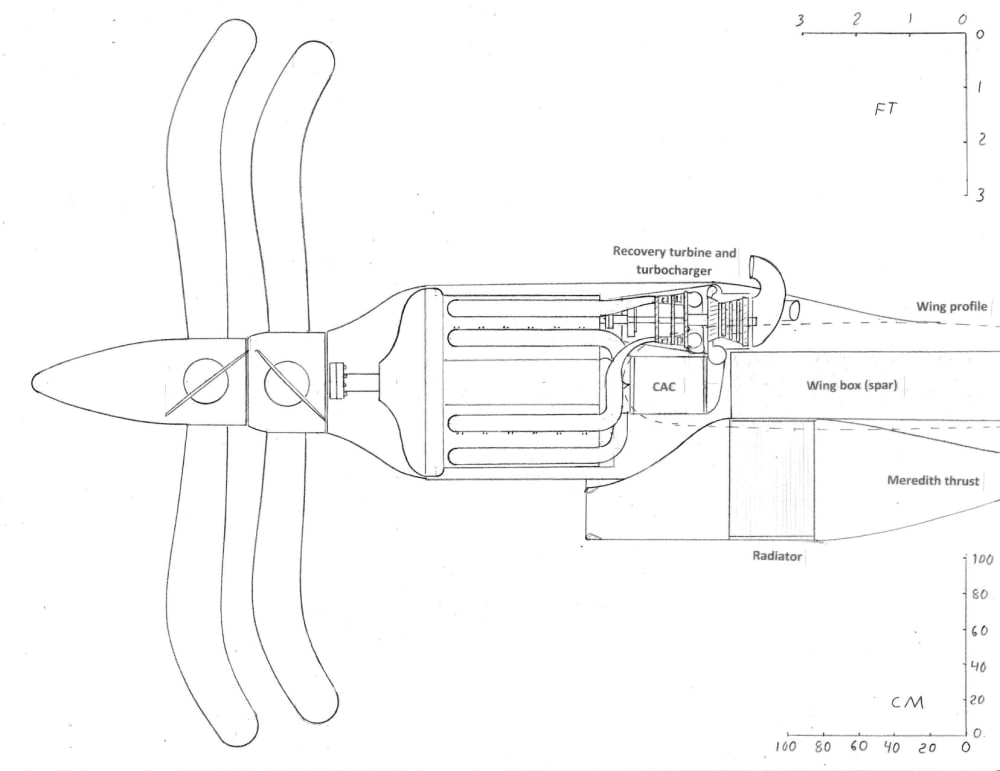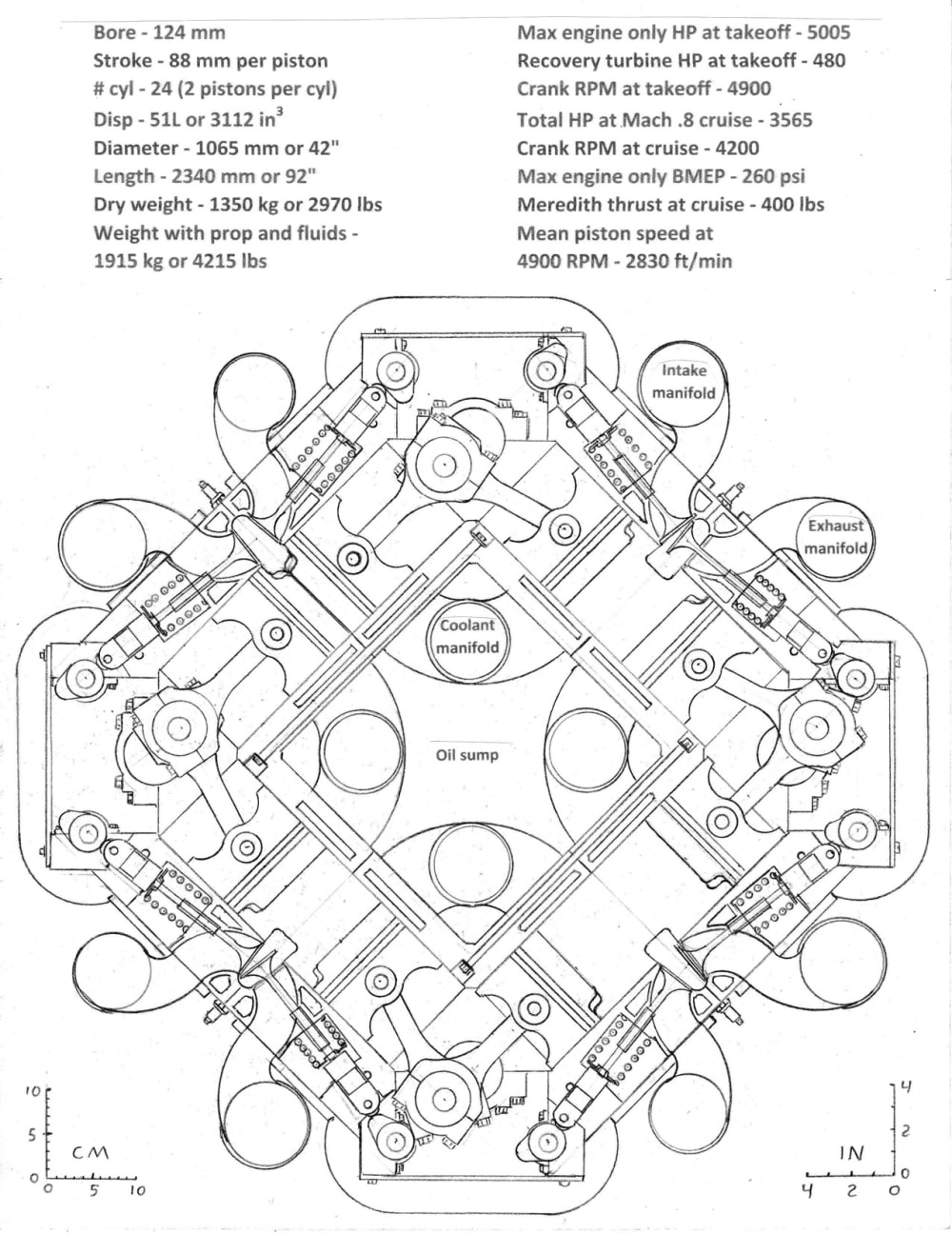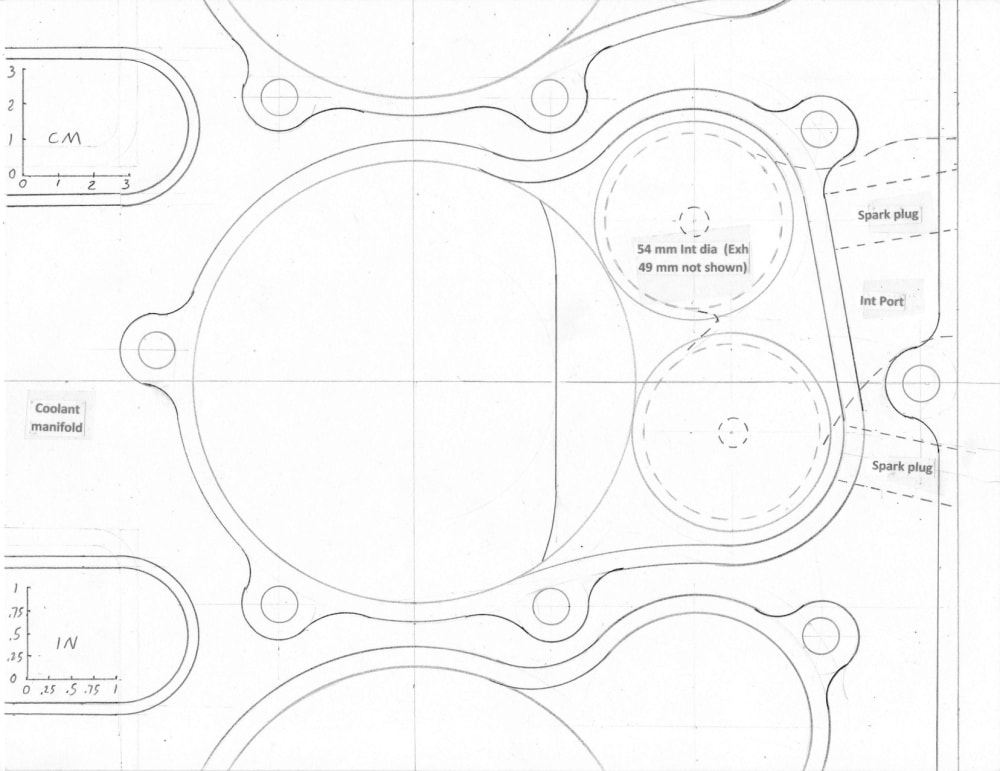My submission is for a carbon neutral commercial aircraft propulsion. The propeller aircraft gave way to the jet mainly due to the large speed difference between the two. Propellers became inefficient at higher speeds such as Mach .8 and the available piston engine technology of the 50’s had insufficient power, and were bulky and heavy. Turboprop aircraft of the time consumed only 2/3 the fuel as jets, but they also were slow, and fuel was cheap.
This entry revives the piston engine. Maintaining the max BMEP and max piston speed of large 60’s era aircraft piston engines, I’ve packaged a 24 cyl engine that has almost double the power, half the volume, and only 80% of the weight compared to the P&W R-4360. Its displacement is 51L and should produce 5485 hp at takeoff. To make it carbon neutral, it will run on 92% ethanol and 8% hydrogen.
Used separately both of these fuels have negative qualities, ethanol has poor fuel consumption, and difficult cold starting while hydrogen produces very high NOX, is prone to unintended ignition (despite a high octane rating), and the fuel storage is very bulky. When combined as a dual fuel, their negatives are canceled by each other to produce a very high octane rating and specific fuel consumptions significantly better than aviation gasoline. If additional NOX control is required, both have a broad A/F ratio range, and EGR acceptance. The engine could also be run at stoichiometric with a 3 way cat for near zero NOX.
Advancements in propeller design has significantly improved their efficiency up to and beyond the typical cruising speeds of airliners. For my calculations I have used a cruise speed of Mach .8 (527 mph @ 30000’). Two of these engines would be sufficient for a 100 passenger aircraft, four could carry 150 passengers, and six could carry 200 passengers. A smaller decontented 16 cyl version without a recovery turbine, and counter rotating props could replace pretty much all of today’s existing turboprop engines.
It would require two engines to replace one of today’s high efficiency jets such as the CFM Leap 1B, but they would burn only 76% of the fuel mass and 83% of the fuel volume compared to the jet. Although two of these propeller units would weigh 1045 kg (2300 lbs.) more than the jet, the difference would be partially offset by the need to carry less fuel, with a crossover point at 3 hr. and 50 min of flight duration.
Besides for fuel savings, the piston engine has a high probability to be less expensive, the CFM Leap 1B has an initial cost around $14.5 million each, and converting this engine to hydrogen would further add cost due to hydrogens higher combustion temperature. Time between maintenance would probably be worse based on the experience of 60’s era commercial aviation, but it should be better than 60’s era engines.
Scaling up beyond this could be difficult, but eight 32 cyl versions could carry up to 300 passengers.
Like this entry?
-
About the Entrant
- Name:Robert Rowells
- Type of entry:individual
- Software used for this entry:excel
- Patent status:none








